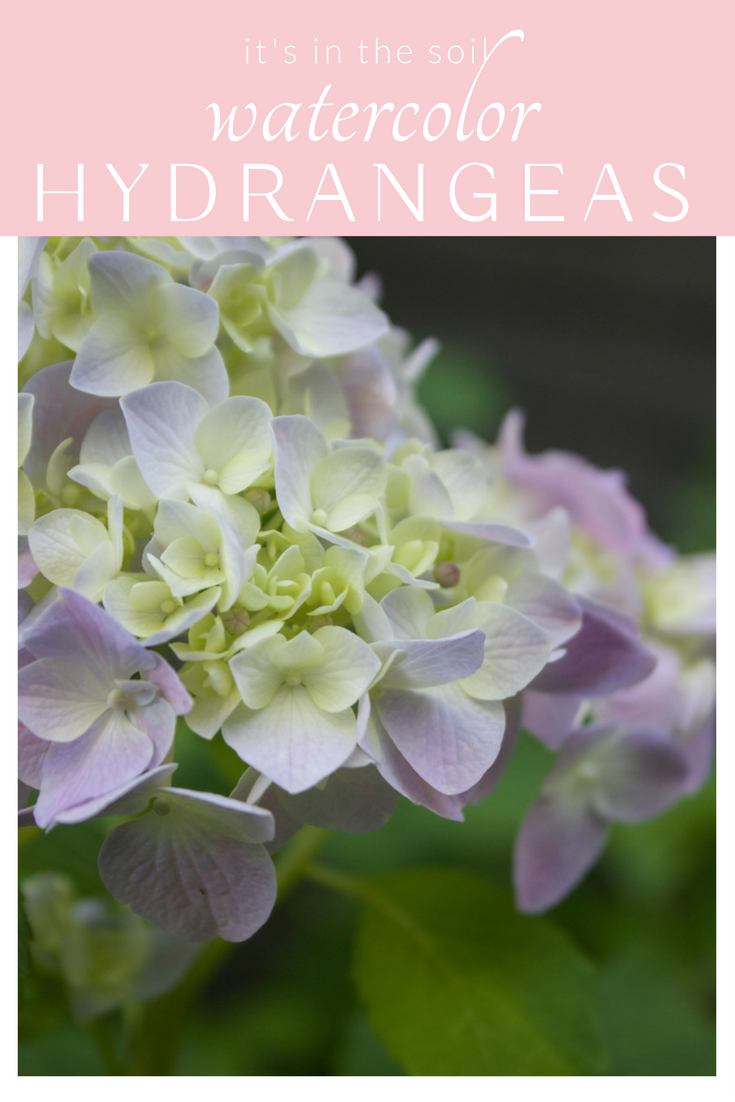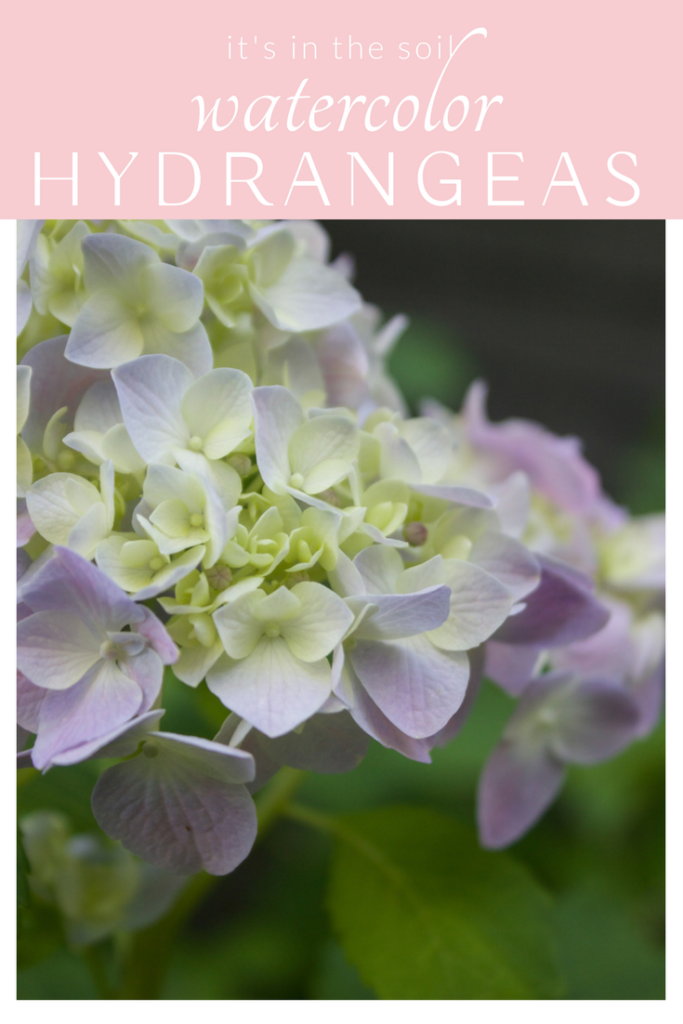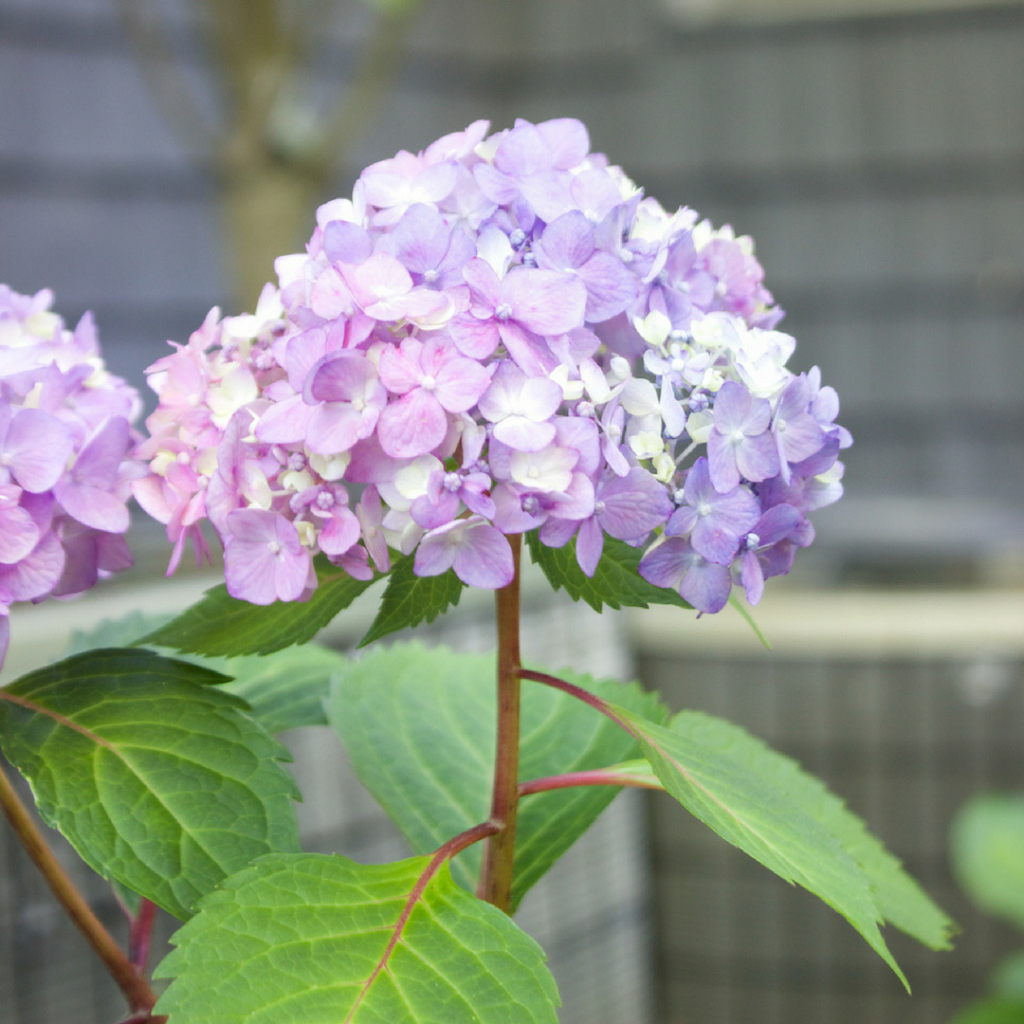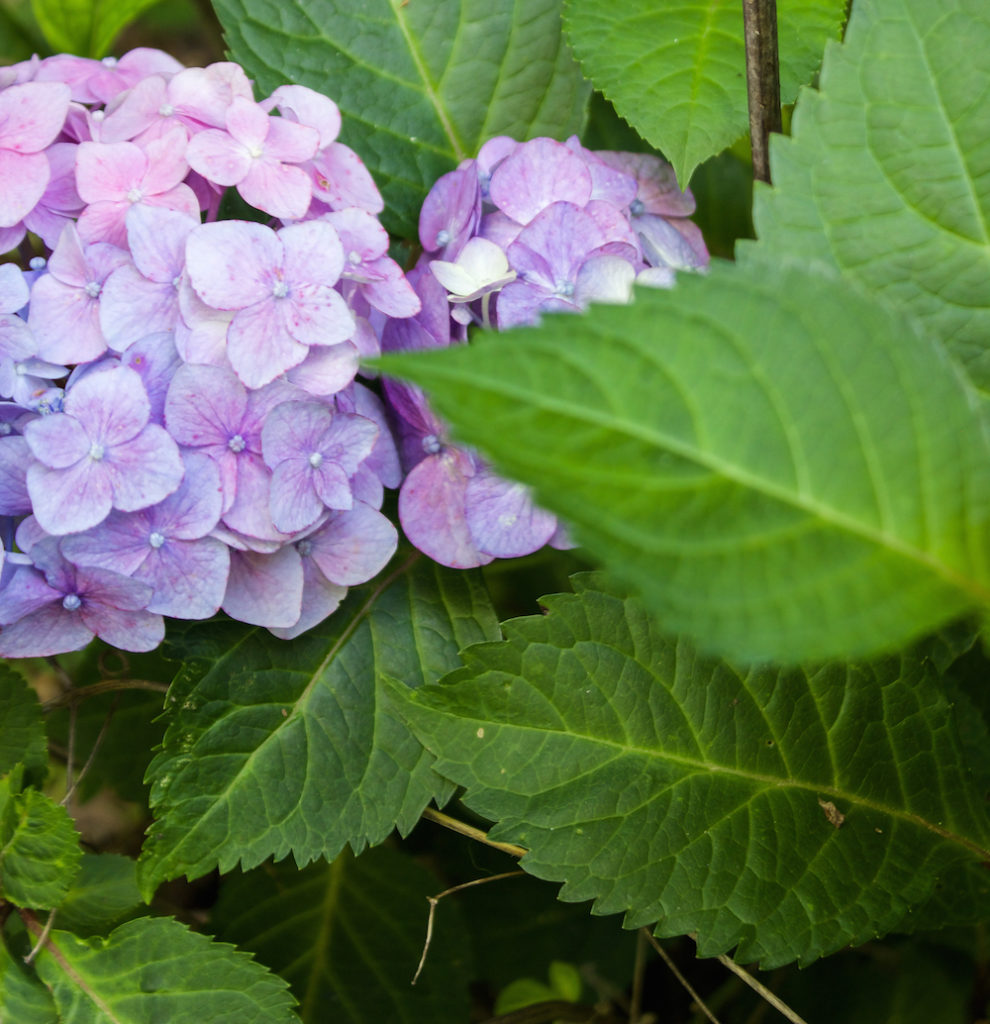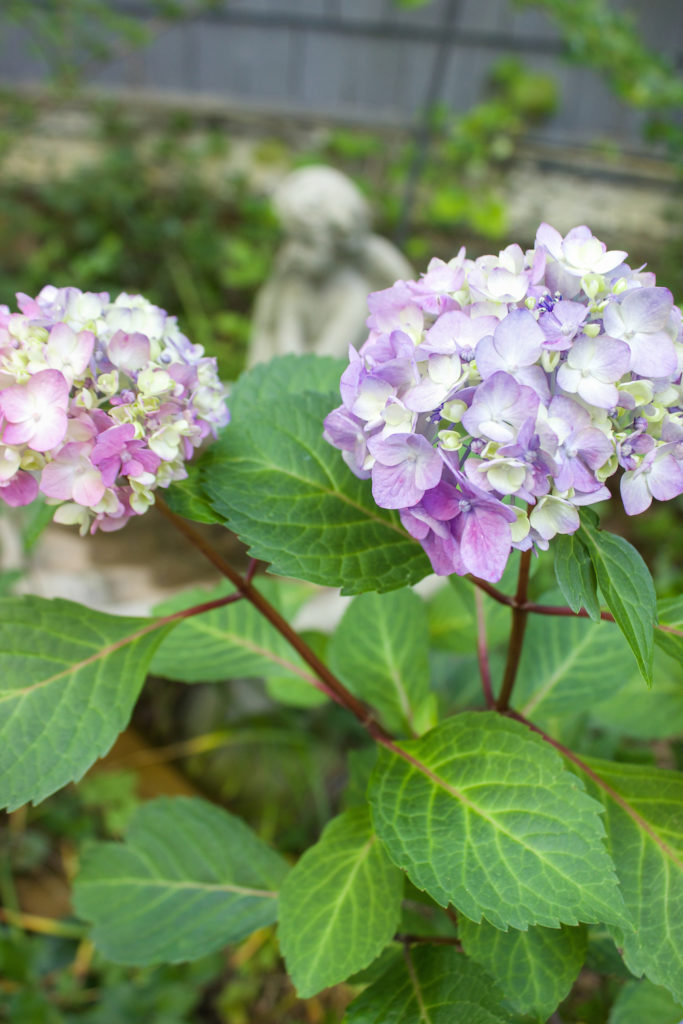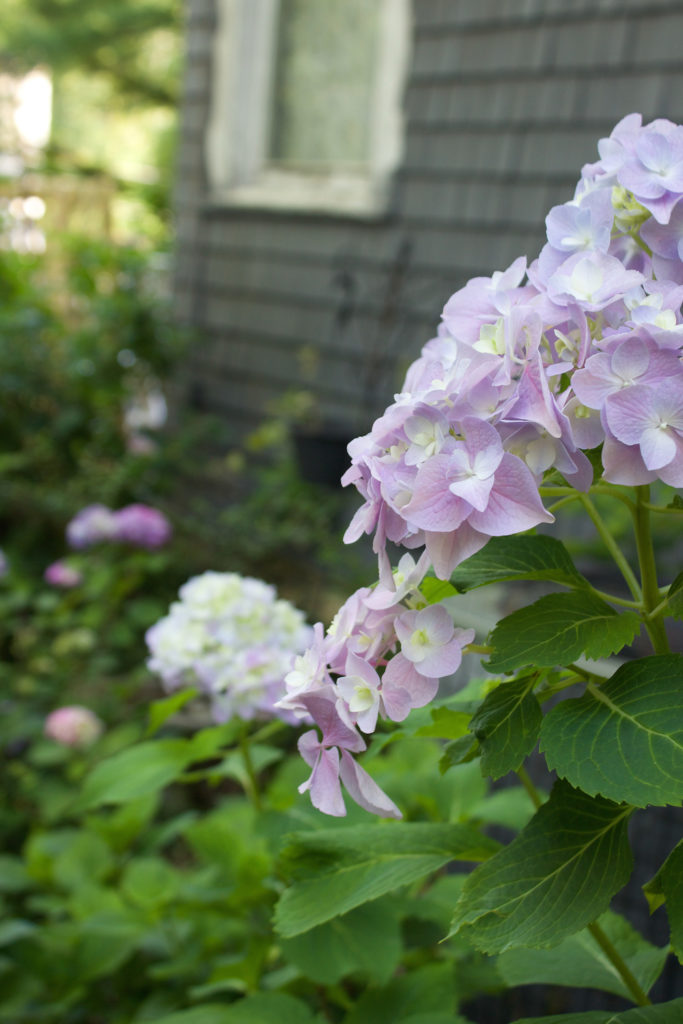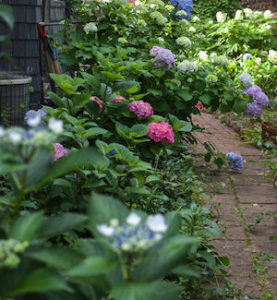I am amazed at the beauty of the Hydrangea. It is one of those stalwart flowering garden shrubs most Southern gardens have. With our acidic soil, most of them tend to be blue; some are almost a deep purple-blue. But, when I find mine opening and see their color I remember: it’s in the soil: the watercolor beauty of Hydrangeas.
It’s in the soil: Watercolor Hydrangeas in the garden
These Hydrangeas grow along the Eastside of the garden protected from the afternoon sun. Most of these have been rooted from shrubs that belong to my Mom and to my Mother-in-Law. My Mother-in-Law’s Hydrangea has beautiful shades of blue and green. This one looks as if a watercolor brush had been dipped and painted the petals random colors.
The one from My Mother’s garden has different variations. They’re both French Hydrangeas.
The Lacecap at the end of this bed is and has always been blue with white lacy trim. I have a “Lady in Red” that succumbed to the acidic soil and is turning bluer. I have an Endless Summer that has retained it’s beautiful blue coloring. But these….
I didn’t do any thing special to this soil. In fact, I’m not sure what the previous owners had done. I do know that some of the potting soil used when planting from their cuttings could have been more neutral. Somewhere along the line, this soil is quite different. Maybe that’s the reason my Camellia is having a hard time in this garden. I think it might need MORE sun. I think it is the soil that created the watercolor Hydrangeas.
What Hydrangeas Like – In Soil – for Pink shades
It’s referred to as ‘sweetening the soil’. The first recommendation is to test the pH of the soil. For pink blooms, your soil’s pH needs to be 7 or above, 7 is neutral. Below 7 your soil is becoming acidic. To create a more alkaline soil the recommendation is to add lime sulfur, wood ash or dolomitic limestone. according to the directions on the package. If your plant is already established, you can sprinkle it atop and gently blend it in. When you’re starting fresh, add humus-rich soil and some of the lime. If on the other hand, you want a more bluer Hydrangea, try adding saw dust, peat moss and oak leaves or some of our great clay!
What Does Soil pH Mean?
Simply, it is a measure of the acidity or the alkalinity of soil. Levels range from 0 to 14. Seven is neutral. Any number below seven is acidic and above seven is alkaline. For most plants, the best range in pH levels are from 5.5 to 7.0.
Southern Soil comes in two types: Clay or Sandy
The majority of our soil deep down is that red clay, which is quite acidic. It’s thick and can choke some plants. Not far from us some gardens are quite sandy. It’s quite amazing the difference. Great soil is a combination of all – clay, sand and composted material. Loamy is it’s description. We can amend our soils to make them more friendly toward our garden plants. Or if you want to try creating your own, watercolor Hydrangeas.
Can Mulch Add Acidity to the Soil?
Good question! I’m not sure yet! I’ve read both sides of the story where Pine Straw mulch is concerned. Hardwood mulch seems to be recommended when adding to vegetable gardens because they breakdown so beautifully. If you know for SURE – I’d LOVE to know!
Beyond the Soil – The Basics in Growing Hydrangeas:
- Especially in the South – protection from afternoon sun
- humus-rich, moist soil
- pruning – depending upon the type of Hydrangea. The ‘big-leaf’ Hydrangea: remove about 1/3 of ‘old’ stems’. Best done in winter when the shrub is bare. Hydrangea Paniculata can be pruned at any time from late summer to early spring; since it flowers on new or current year’s growth.
